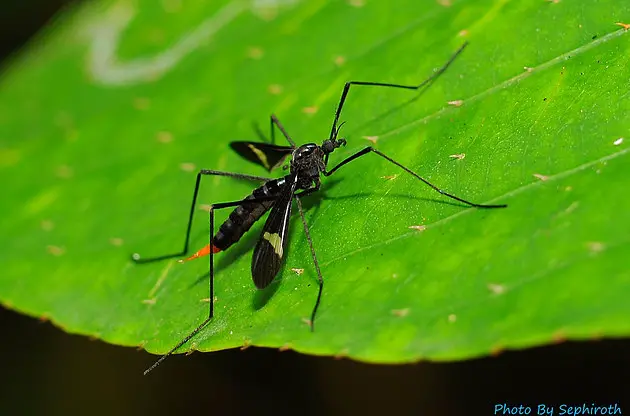A new species of fly with some very unusual features including a forked penis has been accidentally discovered at a national park in Australia's New South Wales.
Professor Gunther Theischinger, a scientist attached with the NSW's Office of Environment and Heritage, made the discovery during a routine monitoring at an alpine creek in Kosciuszko National Park.
Theischinger said the discovery has been the most intriguing species he has ever found to date.
"While it's unusual anatomy makes it stand out from other species, including microscopic wings, very long legs and a forked or 'double barrelled' penis, it is also the first micro-winged male crane fly to be found on mainland Australia," Theischinger said.
"The fly has been confirmed as a new species and has been named Minipteryx robusta meaning "tough tiny wings" and is about 1.5 cm in size, about the length of a human fingernail," he said.
"The wings are highly unusual, measuring only one tenth of its body length making them nearly impossible to see without a microscope," he said.
Theischinger believes the hairy long legs, the reduced wings and weakened flight muscles indicate that it has evolved for walking rather than flying in a cold and windy high altitude environment and that the range of its distribution is very small.
"Wings are of little use in cold latitudes or high elevations because the rate of vibration required for flight usually cannot be achieved," Theischinger added.
"Minipteryx robusta's bizarre shaped penis is also very unusual for a crane fly, although we are still not clear on what advantages this feature might have."
"One possibility is that in the various position changes and twists during crane fly copulation the lack of functional wings may be a disadvantage."
"The 'double barrelled' penis could possibly compensate by giving the male additional strength to grasp the female."
"While this fly may have some shortcomings, he seems to make up for them in other ways."
"This discovery just goes to show how much there is to learn about our environment and that unexpected scientific discoveries can be and are still being made sometimes when you least expect it, " he said.
Theischinger scooped up the fly in a hand net on a wet and windy day when sampling a small alpine creek as part of the department's ongoing water quality monitoring program held at the national park.
Flies play a significant role in the freshwater ecosystem.
Crane fly larvae can be important in soil biodiversity, processing organic material and increasing microbial activity.
They are also prey for many animals, including insects, spiders, fish, amphibians, birds, and mammals living near freshwater environments.
It is estimated only 30 percent of all Australian invertebrates have been officially described.
Theischinger, 76, has been dedicated to exploring the diversity in freshwater environments for over 50 years, describing and naming more than 40 new genera and approximately 730 new species.
(APD)
 简体中文
简体中文



